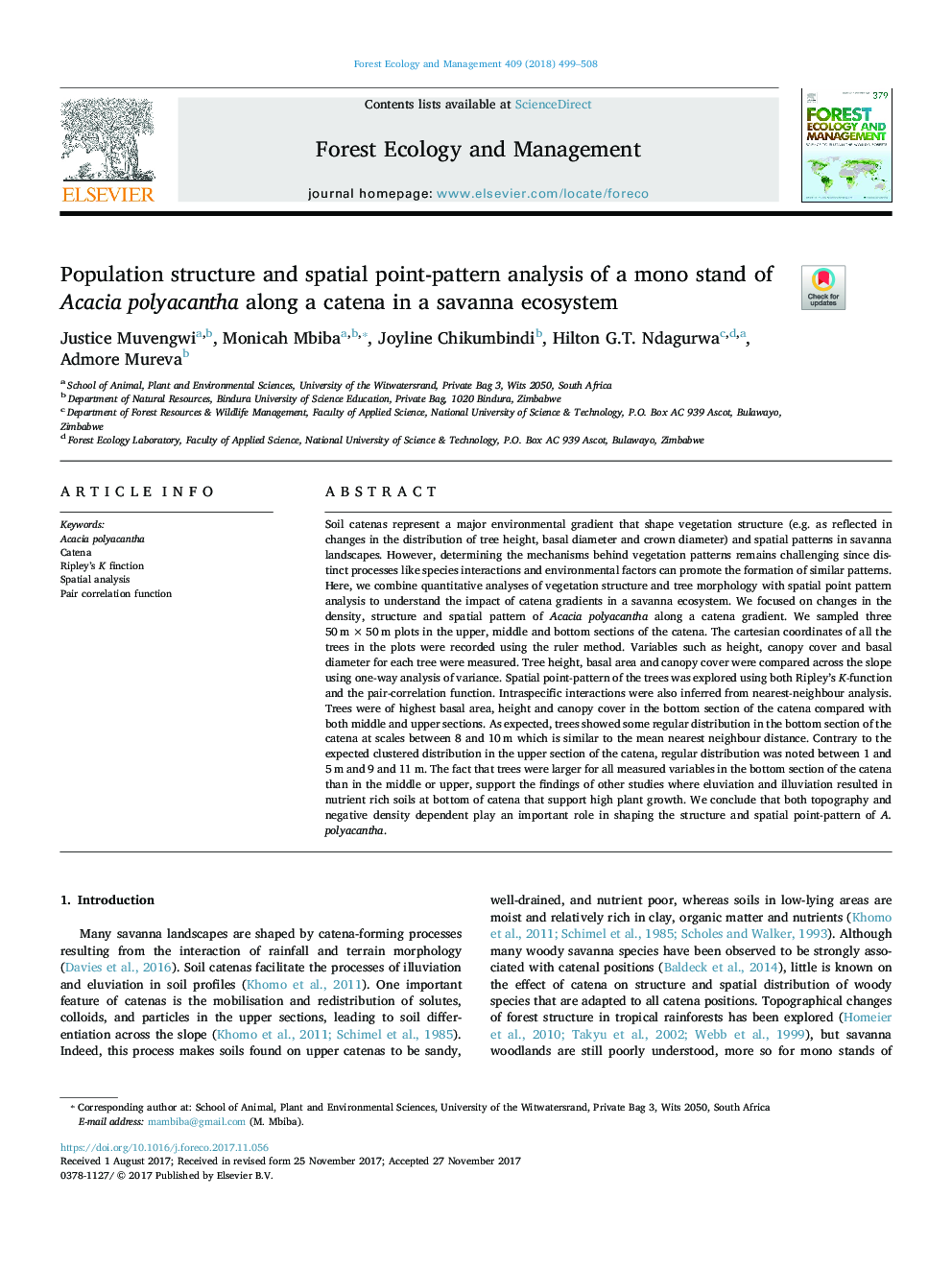| کد مقاله | کد نشریه | سال انتشار | مقاله انگلیسی | نسخه تمام متن |
|---|---|---|---|---|
| 6541939 | 1421349 | 2018 | 10 صفحه PDF | دانلود رایگان |
عنوان انگلیسی مقاله ISI
Population structure and spatial point-pattern analysis of a mono stand of Acacia polyacantha along a catena in a savanna ecosystem
ترجمه فارسی عنوان
ساختار جمعیت و تجزیه و تحلیل الگوریتم فضایی یک مونو آکوآیا پلیکانانته همراه یک کاتنا در اکوسیستم ساوانا
دانلود مقاله + سفارش ترجمه
دانلود مقاله ISI انگلیسی
رایگان برای ایرانیان
کلمات کلیدی
موضوعات مرتبط
علوم زیستی و بیوفناوری
علوم کشاورزی و بیولوژیک
بوم شناسی، تکامل، رفتار و سامانه شناسی
چکیده انگلیسی
Soil catenas represent a major environmental gradient that shape vegetation structure (e.g. as reflected in changes in the distribution of tree height, basal diameter and crown diameter) and spatial patterns in savanna landscapes. However, determining the mechanisms behind vegetation patterns remains challenging since distinct processes like species interactions and environmental factors can promote the formation of similar patterns. Here, we combine quantitative analyses of vegetation structure and tree morphology with spatial point pattern analysis to understand the impact of catena gradients in a savanna ecosystem. We focused on changes in the density, structure and spatial pattern of Acacia polyacantha along a catena gradient. We sampled three 50â¯mâ¯Ãâ¯50â¯m plots in the upper, middle and bottom sections of the catena. The cartesian coordinates of all the trees in the plots were recorded using the ruler method. Variables such as height, canopy cover and basal diameter for each tree were measured. Tree height, basal area and canopy cover were compared across the slope using one-way analysis of variance. Spatial point-pattern of the trees was explored using both Ripley's K-function and the pair-correlation function. Intraspecific interactions were also inferred from nearest-neighbour analysis. Trees were of highest basal area, height and canopy cover in the bottom section of the catena compared with both middle and upper sections. As expected, trees showed some regular distribution in the bottom section of the catena at scales between 8 and 10â¯m which is similar to the mean nearest neighbour distance. Contrary to the expected clustered distribution in the upper section of the catena, regular distribution was noted between 1 and 5â¯m and 9 and 11â¯m. The fact that trees were larger for all measured variables in the bottom section of the catena than in the middle or upper, support the findings of other studies where eluviation and illuviation resulted in nutrient rich soils at bottom of catena that support high plant growth. We conclude that both topography and negative density dependent play an important role in shaping the structure and spatial point-pattern of A. polyacantha.
ناشر
Database: Elsevier - ScienceDirect (ساینس دایرکت)
Journal: Forest Ecology and Management - Volume 409, 1 February 2018, Pages 499-508
Journal: Forest Ecology and Management - Volume 409, 1 February 2018, Pages 499-508
نویسندگان
Justice Muvengwi, Monicah Mbiba, Joyline Chikumbindi, Hilton G.T. Ndagurwa, Admore Mureva,
